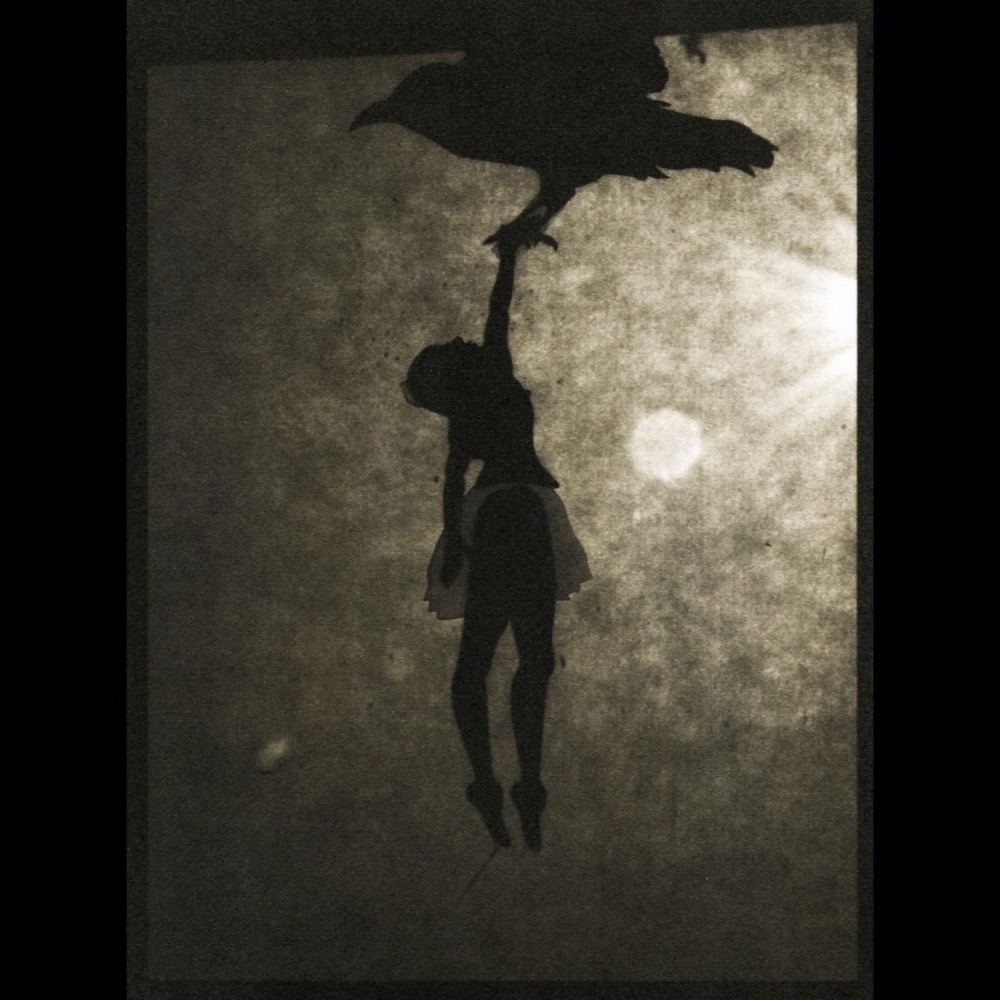Angelina Kidd, (Booth 161), of Redmond, Washington, is among the 57 artists making their first appearance at the Utah Arts Festival’s Artist Marketplace this year. Kidd specializes in the handmade aspects of her photographic artistry, with 3-D paper collage imagery constructed by hand then silhouette photographed. Colors and textures come from the paper and she creates wet plate tintypes of 3-D scenes in the darkroom with chemistry
Kidd, whose ancestry includes a Cuban father and an American mother of Filipino and Polynesian descent, she lived in Hawai’i, before moving to the mainland. Angelina received her master of fine arts from Boston’s Lesley University School of Art & Design. In addition to her art business, she operates a Pilates studio in Redmond. In her artistic statement, she explains the themes and how her creative process facilitates them. “One is the possibility of life after life and the passage of the soul between these two planes of existence,” she writes. “Another is the theme of humanity’s relationship with the natural world and its mysteries. In many of my photographs I use animals as characters, both as actors in their own right and to convey aspects of human experience to the viewer. The key elements of light, shadow and color combine with each of these themes to suggest an overarching sense of longing.”
Kidd adds that A Light Heist embodies her ideals about the significance of photography, as evidenced in several of her works that play with the idea of “a light heist.” “The magic of photography lies in its ability to both exactly reproduce the world and suggest a new way of looking at it, and the multiple meanings of A Light Heist echo that,” Kidd writes. “I hope that my work encourages viewers to appreciate the miracle embodied in every photograph.”
Kidd also answered several questions by email from The Utah Review.
TUR: How have you used art media forms in helping to create an holistic body of artistic work that searches for a more complete expression of your own innermost and most powerful states of emotion, inspiration, contemplation, and self-identity?
AK: I have always had an artistic outlet of expression. While growing up in Hawai’i, I studied hula. My mother’s hobby was photography, so I first learned how to use a film camera at a very early age. It wasn’t until I was an adult that I wanted to truly understand photography, and I felt the best way to do that was to go back to when photography was first invented. I was intrigued by palladium printing and wet plate collodion tintypes. For more than a decade I have worked to hone my craft. While in grad school, I wanted a new way to artistically communicate, which is how I got into my constructed imagery collages. Finally, I would say that using silhouette photography allows me to fully express myself.
TUR: What is your training as an artist? Who do you consider your most significant influences and inspirations? Do these influences shift as you progress both in your work and life?
AK: I earned a Masters of Fine Arts which focused on conceptualism and which also refined my artistic style overall. For specific technical training, I learned from other artists that I believe are at the top of the field of historical photographic processes. Artists who have inspired me include Marc Chagall, Mark Rothko, Frida Kahlo, and Maggie Taylor.
TUR: Do you work full-time exclusively as an artist? Or, how do you augment your work as an artist?
AK: I split my work time between being an artist and a movement specialist (Pilates, yoga, etc.) instructor/studio owner.
TUR: Do you find it easy or difficult to start new work? And, typically, how do you prepare yourself to handle both the creative and physical demands of creating your art?
AK: I am continuously inspired by the natural world and find the only difficulty is having enough time to create all the pieces in my mind. Following the seasons in the Pacific Northwest, I do my constructed imagery work during the fall/winter months when I need darkness and devote spring and summer to wet plate collodion tintypes, which require UV light. When inspiration hits, I quickly sketch a concept; once I have the time to create the piece, I return to the sketch and begin my work.
TUR: With regard to participating in the Utah Arts Festival, please share your feelings about being a part of this enterprise? Have you been in other festivals and do you plan to explore other festival venues?
AK: This is my first year with the Utah Arts Festival and I’m excited to share my work. It is fascinating to hear the reaction people have to my art. Many times I find inspiration from simply hearing people’s reactions to my work. I have many festivals coming up in the Pacific Northwest, including Art in the Pearl in Portland Oregon, the Bellevue Arts Museum, the Anacortes Arts Festival and many others in Washington State.




2 thoughts on “Backstage at the Utah Arts Festival 2022: Angelina Kidd and the ideal of A Light Heist in her photographic artistry”